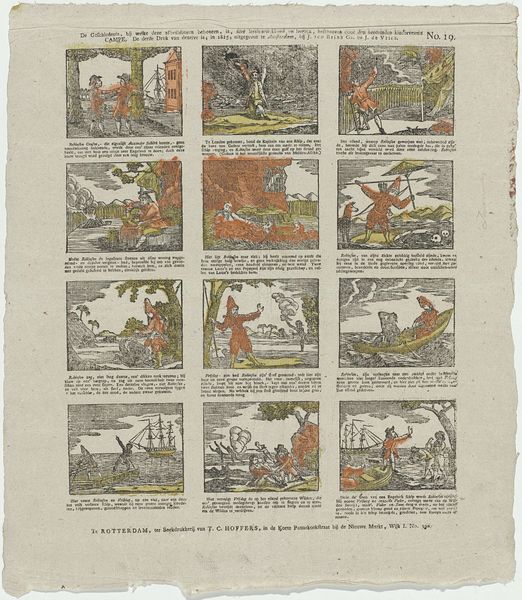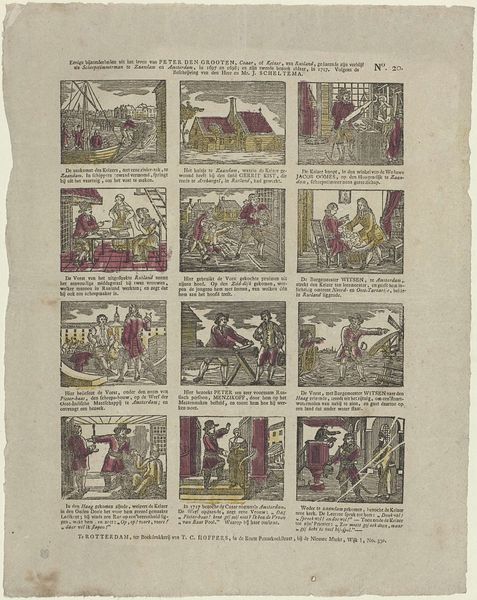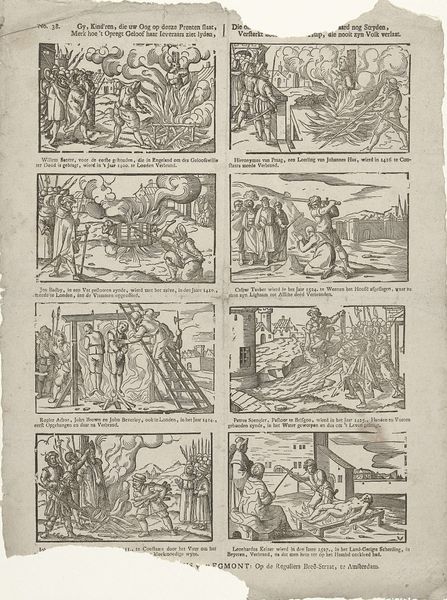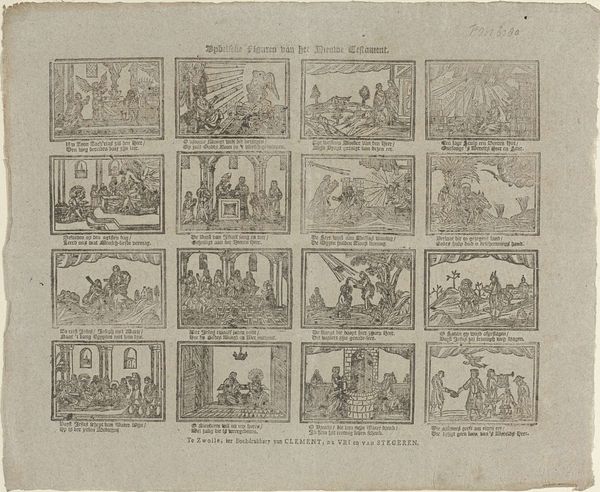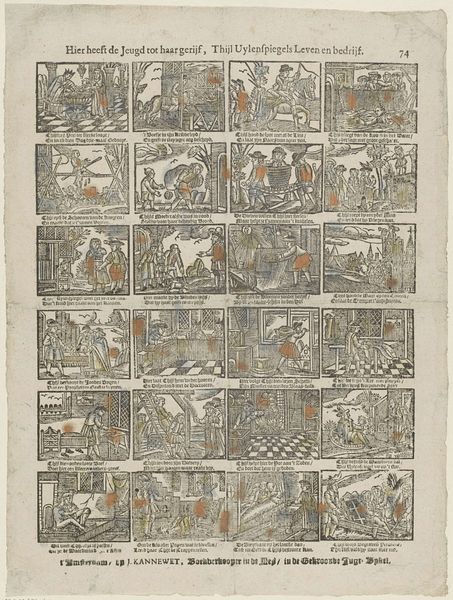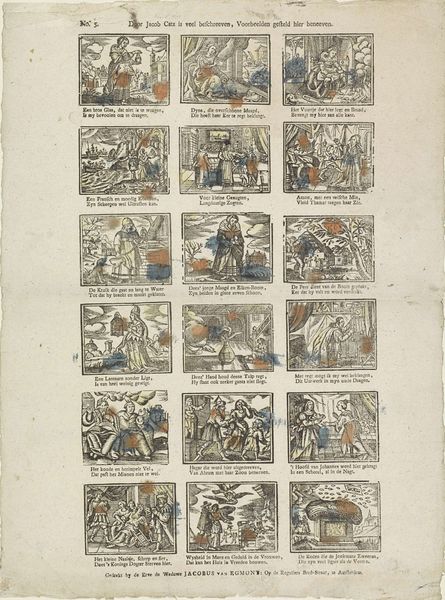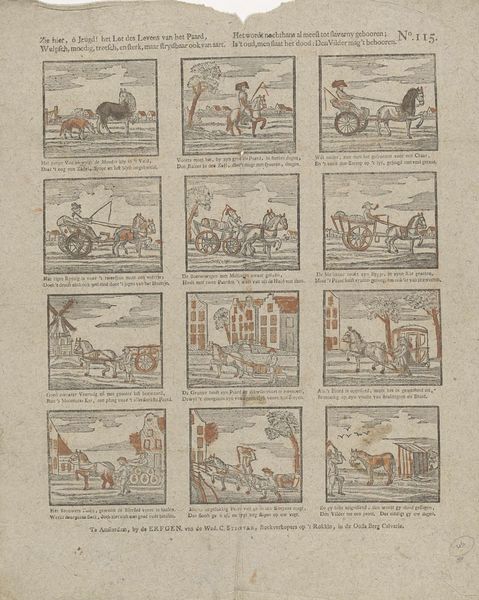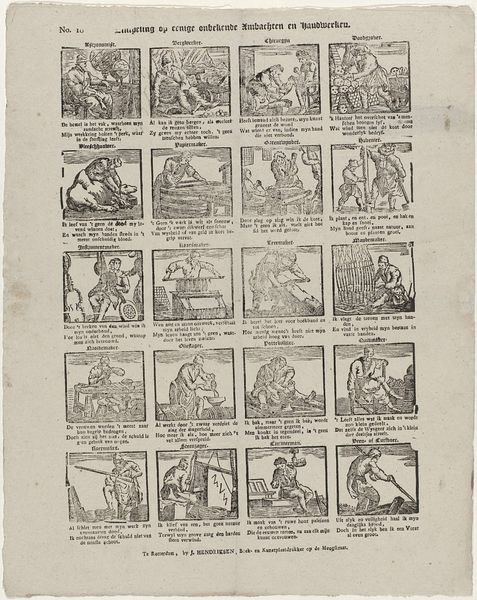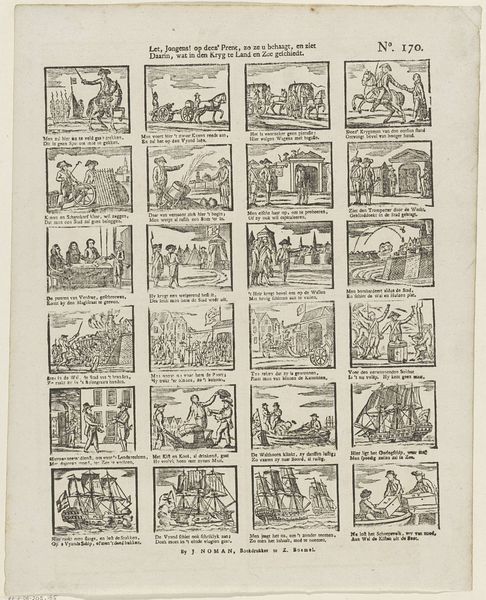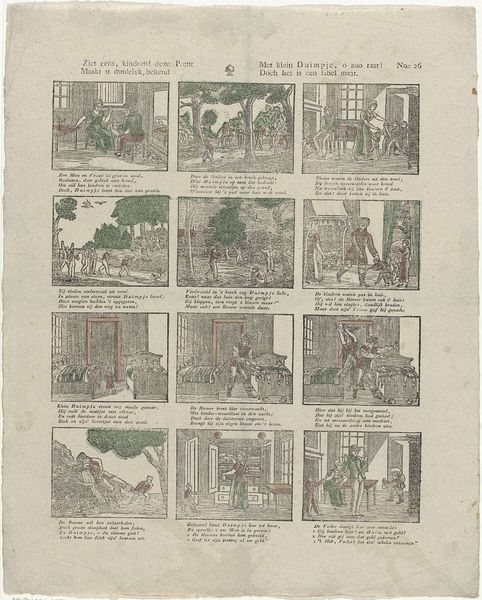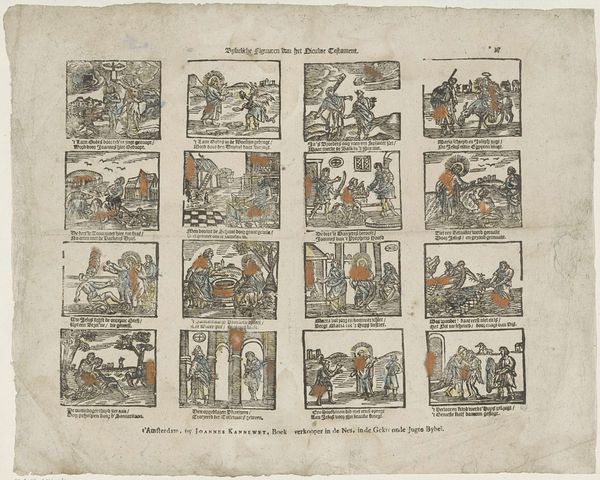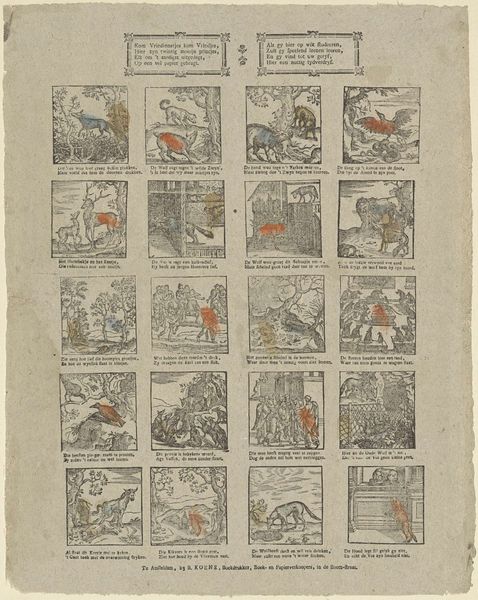
print, engraving
#
comic strip sketch
#
narrative-art
# print
#
genre-painting
#
engraving
Dimensions: height 427 mm, width 328 mm
Copyright: Rijks Museum: Open Domain
Curator: This engraving by Christiaan Jacob Schuyling, dating from sometime between 1820 and 1838, is titled "Csaar Peter de Groote in Holland, 1697." What's your initial reaction to it? Editor: It's fascinating how it presents a narrative almost like a comic strip, yet with a quaint, historical feel. The overall muted palette adds to a sense of faded grandeur and, perhaps, industry. Curator: Exactly. The use of printmaking allowed for the wider circulation of information and political narratives. Schuyling would have meticulously etched the design onto a metal plate. We also see the means of production, shipbuilding, explicitly shown, along with scenes depicting work, hinting at a focus on Peter the Great’s involvement with craftsmanship in the Netherlands. Editor: The images themselves have the simplified quality of popular prints. The individual scenes show encounters, labors, and transactions of various kinds, each playing into the larger story of Peter’s travels. Each tiny moment is dense with iconographic potential. Curator: How do you interpret those smaller images, specifically? Does any of the imagery seem particularly loaded? Editor: Consider the images of Tsar Peter himself; in each, he appears engaged in either shipbuilding or observing the construction of boats or infrastructure. Note, that at the time Peter was known for touring Europe to pick up innovative approaches to technical craftsmanship and engineering to bring back to Russia. The whole print acts as a symbolic celebration of practical work. Curator: And through its mass production and accessibility, it arguably democratized a visual narrative that might otherwise have remained confined to more elite artistic circles. These prints put this story of ambition in front of people across social classes. Editor: Ultimately, what strikes me most is the dual nature of this piece: It's a testament to one ruler's curiosity for trades but, it does this via a distinctly artisanal method. There’s a kind of cyclical tribute there. Curator: I agree; thank you for so cogently breaking down the narratives presented. Seeing an engagement with labor combined with an artifact for wider consumption really enriches my interpretation.
Comments
No comments
Be the first to comment and join the conversation on the ultimate creative platform.
